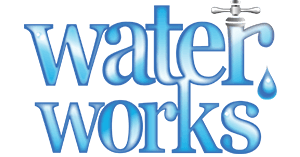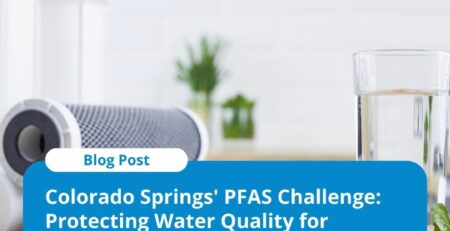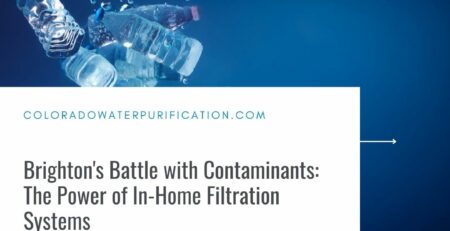Thornton’s Guide to Eco-Friendly Water Treatment Options
Welcome home owners! As the world becomes more conscious of our impact on the environment, it’s important for us to consider eco-friendly options in all aspects of our lives. This includes how we treat and use water in our homes. Water is a precious resource that should not be taken for granted, and with increasing concerns about water scarcity and pollution, it’s essential that we take steps towards sustainable water treatment solutions. In this blog post, we will explore Thornton’s Guide to Eco-Friendly Water Treatment Options – offering you invaluable information on how you can make small changes in your home to help promote a healthier planet while also saving money on utility bills. Are you ready to become an eco-warrior? Let’s dive into these tips together!
Introduction to the importance of eco-friendly water treatment and its impact on the environment
Water treatment is an essential process in ensuring that our water is safe for consumption and use. However, traditional methods of water treatment often have disastrous consequences on the environment. This is where eco-friendly water treatment comes in to play. Eco-friendly water treatment methods aim to reduce the negative impact of chemicals and other harmful substances on the environment. By using natural processes such as filtration, organic matter decomposition, and bioremediation, eco-friendly water treatment helps to maintain the delicate balance of our ecosystems. By adopting eco-friendly water treatment methods, we can reduce our carbon footprint and safeguard the environment for future generations.
Highlighting traditional water treatment methods and their negative effects on the environment
Did you know that many traditional water treatment methods, used to clean and purify our drinking water, can actually harm the environment? While these methods have been effective in removing harmful contaminants from water, they often create their own set of problems. Chemical treatments, for example, can produce harmful byproducts that are difficult to dispose of safely. Similarly, energy-intensive processes like desalination can contribute to greenhouse gas emissions and climate change. That’s why it’s important to explore sustainable and eco-friendly water treatment options that prioritize both clean water and a healthy environment. Luckily, there are many innovative solutions out there!
Introducing alternative, eco-friendly water treatment options such as rainwater harvesting and greywater systems
Did you know that there are other alternatives to traditional water treatment options? Rainwater harvesting and greywater systems are eco-friendly options that can significantly contribute towards water conservation. With a rainwater harvesting system, you can collect rainwater that falls on your roof and store it for later use. Greywater systems, on the other hand, collect wastewater from your washing machine, sinks and showers and treat it to remove any contaminants before reusing it for non-drinking purposes such as toilet flushing or watering plants. Not only are these systems environmentally-friendly, but they can also save you money on your monthly water bills. Consider incorporating alternative water treatment options into your lifestyle and help preserve this precious resource for future generations to come.
Discussing the benefits of rainwater harvesting, including reduced water usage and cost savings
Did you know that rainwater harvesting can benefit both you and the environment? By collecting rainwater in a designated tank or system, you can reduce your overall water usage and save on your monthly water bill. Plus, this method of water preservation is eco-friendly and sustainable, as it reduces strain on local water sources and promotes a more self-sufficient lifestyle. Not only does rainwater harvesting provide a practical solution for water conservation, it can also be a fun and rewarding activity to incorporate into your daily routine. So why not start saving water and costs by implementing rainwater harvesting today?
Detailing the process of setting up a rainwater harvesting system in your home, including necessary equipment and maintenance tips
Interested in setting up a rainwater harvesting system in your home? It’s a great way to not only save on your water bill, but also contribute to a more sustainable future. To get started, you’ll need a few key pieces of equipment. First, you’ll need a collection system, such as a rain barrel or cistern, to collect the water. You’ll also need a filtration system, which can range from a simple mesh screen to a more advanced system with a series of filters. Once installed, it’s important to maintain your system by regularly checking the filters, clearing out any debris, and storing the system properly during the winter months. With a little bit of effort, you’ll be able to enjoy the benefits of a rainwater harvesting system for years to come.
Explaining how greywater systems work and their benefits, such as reducing strain on public sewage systems and providing a source for irrigation
If you’re looking to reduce strain on public sewage systems while also saving water, greywater systems are the solution you’ve been looking for. These systems work by routing used water, such as from sinks or washing machines, to be reused for tasks such as irrigation or toilet flushing. By doing this, greywater systems can reduce the amount of water sent to public sewage systems and the cost associated with treating it. Additionally, reusing greywater for irrigation can keep your garden thriving while also reducing the amount of potable water you need to keep it that way. It’s a win-win situation for both your wallet and the environment.
Addressing common concerns or misconceptions about eco-friendly water treatment methods
When it comes to eco-friendly water treatment methods, there are a few common concerns and misconceptions to address. One of the biggest concerns is that these methods may not be as effective as traditional methods. However, with advancements in technology and research, eco-friendly methods are just as effective, if not more so, than traditional methods. Another misconception is that these methods are too expensive. While it may require an initial investment, eco-friendly methods can actually save money in the long run through energy efficiency and decreased chemical usage. It is important to remember that eco-friendly water treatment is not only good for the environment but also for our own health and well-being. By choosing sustainable methods, we are investing in a healthier future for ourselves and our planet.
Providing tips for incorporating these methods into everyday life for maximum impact
Learning about new methods is only half the battle. The real challenge begins when you have to implement them into your everyday life. Fortunately, there are tips and tricks to make this transition easier and more effective. Start small by incorporating one method at a time and gradually adding on as you become more comfortable. It’s also important to stay accountable and track your progress. Find a friend or family member who is interested in the same methods and hold each other accountable. Remember, incorporating these methods into your daily routine requires patience and commitment, but with time, the impact on your well-being will be worth it.
Conclusion highlighting the positive environmental impact of using eco-friendly water treatment options in our homes
As the world becomes more aware of the impact that humans have on the environment, it’s important to consider how we can change our daily habits to help mitigate the damage. One way to do this is by using eco-friendly water treatment options in our homes. These options can include using rainwater harvesting systems, showering with low-flow showerheads, and utilizing greywater systems. By implementing these changes, we can reduce the amount of water that we waste, as well as decrease the amount of harmful chemicals that are released into our ecosystems. Not only does this benefit the planet, but it can also save you money in the long run. So let’s all do our part by making small changes in our homes to help protect the environment for future generations.
In conclusion, eco-friendly water treatment is not just a trend, but a crucial step towards preserving our planet for future generations. As we have seen, traditional water treatment methods have damaging effects on the environment and our resources. However, there are sustainable and effective alternatives such as rainwater harvesting and greywater systems that can make a significant difference in reducing our water usage and protecting our natural resources.
From saving on costs to reducing strain on public sewage systems, utilizing these eco-friendly options brings numerous benefits to both individuals and the environment as a whole. And with advancements in technology, setting up a rainwater harvesting system or installing a greywater system has never been easier. With the right equipment and maintenance tips, you can incorporate these methods seamlessly into your daily routine.
It is also important to address any concerns or misconceptions surrounding these green water treatment options. While some may fear contamination or complicated installation processes, it is crucial to seek out professional advice and proper guidelines when implementing these systems.
Overall, incorporating eco-friendly water treatment methods into our homes is not only necessary but also achievable. By taking small steps towards sustainable living, we can all play a vital role in preserving our planet’s precious resources for future generations. Let us be conscious of our actions and make eco-friendliness a priority in our daily lives – because ultimately, every drop counts in creating a better world for us all.











